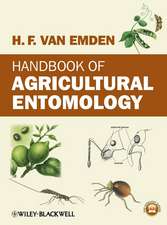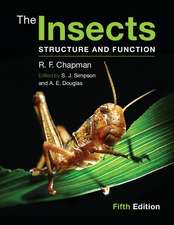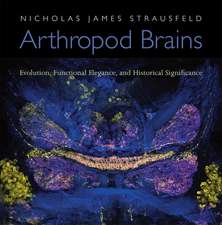The Ciliated Protozoa: Characterization, Classification, and Guide to the Literature
Autor Denis Lynnen Limba Engleză Paperback – 23 aug 2016
| Toate formatele și edițiile | Preț | Express |
|---|---|---|
| Paperback (1) | 1745.71 lei 38-44 zile | |
| SPRINGER NETHERLANDS – 23 aug 2016 | 1745.71 lei 38-44 zile | |
| Hardback (1) | 1752.71 lei 38-44 zile | |
| SPRINGER NETHERLANDS – iul 2008 | 1752.71 lei 38-44 zile |
Preț: 1745.71 lei
Preț vechi: 2296.98 lei
-24% Nou
Puncte Express: 2619
Preț estimativ în valută:
334.15€ • 363.08$ • 280.87£
334.15€ • 363.08$ • 280.87£
Carte tipărită la comandă
Livrare economică 17-23 aprilie
Preluare comenzi: 021 569.72.76
Specificații
ISBN-13: 9789401776929
ISBN-10: 940177692X
Pagini: 605
Ilustrații: XXXIII, 605 p.
Dimensiuni: 193 x 260 mm
Greutate: 1.33 kg
Ediția:Softcover reprint of the original 3rd ed. 2008
Editura: SPRINGER NETHERLANDS
Colecția Springer
Locul publicării:Dordrecht, Netherlands
ISBN-10: 940177692X
Pagini: 605
Ilustrații: XXXIII, 605 p.
Dimensiuni: 193 x 260 mm
Greutate: 1.33 kg
Ediția:Softcover reprint of the original 3rd ed. 2008
Editura: SPRINGER NETHERLANDS
Colecția Springer
Locul publicării:Dordrecht, Netherlands
Cuprins
and Progress in the Last Half Century.- Glossary of Terms and Concepts Useful in Ciliate Systematics.- Characters and the Rationale Behind the New Classification.- Phylum CILIOPHORA – Conjugating, Ciliated Protists with Nuclear Dualism.- Subphylum 1. POSTCILIODESMATOPHORA: Class 1. KARYORELICTEA – The “Dawn” or Eociliates.- Subphylum 1. POSTCILIODESMATOPHORA: Class 2. HETEROTRICHEA – Once Close to the Top.- Subphylum 2. INTRAMACRONUCLEATA: Class 1. SPIROTRICHEA – Ubiquitous and Morphologically Complex.- Subphylum 2. INTRAMACRONUCLEATA: Class 2. ARMOPHOREA – Sapropelebionts that Once Were Heterotrichs.- Subphylum 2. INTRAMACRONUCLEATA: Class 3. LITOSTOMATEA – Simple Ciliates but Highly Derived.- Subphylum 2. INTRAMACRONUCLEATA: Class 4. PHYLLOPHARYNGEA — Diverse in Form, Related in Structure.- Subphylum 2. INTRAMACRONUCLEATA: Class 5. NASSOPHOREA — Diverse, Yet Still Possibly Pivotal.- Subphylum 2. INTRAMACRONUCLEATA: Class 6. COLPODEA — Somatically Conserved but Orally Diverse.- Subphylum 2. INTRAMACRONUCLEATA: Class 7. PROSTOMATEA — Once Considered Ancestral, Now Definitely Derived.- Subphylum 2. INTRAMACRONUCLEATA: Class 8. PLAGIOPYLEA — A True Riboclass of Uncommon Companions.- Subphylum 2. INTRAMACRONUCLEATA: Class 9. OLIGOHYMENOPHOREA — Once a Pivotal Group, Now a Terminal Radiation.- Deep Phylogeny, Gene Sequences, and Character State Evolution — Mapping the Course of Ciliate Evolution.- The Ciliate Taxa Including Families and Genera.
Recenzii
From the reviews of the third edition:
"The book is a combination of rigour, detail, and clarity. The prose is succinct and accessible, and the illustrations … are appropriate … . Of course, protozoologists will benefit from owning, or having access to this book, but others including applied and pure ecologist and broad range of phylogenists, microbiologists, and ultrastruturalists will appreciate its content and views. … it is a comprehensive reference work for students, teachers, and researchers interested in ciliate phylogeny, taxonomy, life histories, structure, and function." (David J.S. Montagnes, Limnology and Oceanography Bulletin, Vol. 18 (1), March, 2009)
"The book is a combination of rigour, detail, and clarity. The prose is succinct and accessible, and the illustrations … are appropriate … . Of course, protozoologists will benefit from owning, or having access to this book, but others including applied and pure ecologist and broad range of phylogenists, microbiologists, and ultrastruturalists will appreciate its content and views. … it is a comprehensive reference work for students, teachers, and researchers interested in ciliate phylogeny, taxonomy, life histories, structure, and function." (David J.S. Montagnes, Limnology and Oceanography Bulletin, Vol. 18 (1), March, 2009)
Notă biografică
Dr. Denis H. Lynn received his graduate training at the University of Toronto where he received his Ph.D. Protozoology in 1975. His early research on the comparative ultrastructure of ciliates was published in Biological Reviews and lead to a revised classification of the Phylum Ciliophora, which was published in 1981 in collaboration with Eugene B. Small. Dr. Lynn has published extensively on ciliates, authoring more than a dozen book chapters and almost 120 refereed publications. He is currently a full professor in the Department of Integrative Biology, University of Guelph, and Editor in Chief of The Journal of Eukaryotic Microbiology.
Textul de pe ultima copertă
The third edition of The Ciliated Protozoa continues the innovative approach of the previous two editions, thoroughly documenting the progress in our understanding of the evolutionary diversification of these widely distributed eukaryotic microorganisms.
The Glossary is considerably revised and expanded, serving as an illustrated ‘subject index’ of more than 700 terms. An introduction to the phylum is followed by chapters on the 11 classes. Each class chapter contains 7 sections:
This unique and timely book will serve as a comprehensive and authoritative reference work for students, teachers, and researchers who have an interest in the protozoa, and particularly the ciliates.
As an additional feature, all figures are available electronically for free viewing on the book's homepage at www.springer.com/978-1-4020-8238-2, under Additional Information.
The Glossary is considerably revised and expanded, serving as an illustrated ‘subject index’ of more than 700 terms. An introduction to the phylum is followed by chapters on the 11 classes. Each class chapter contains 7 sections:
- taxonomic structure
- life history and ecology
- somatic structures
- oral structures
- division and morphogenesis
- nuclei, sexuality, and life cycle
- other features
This unique and timely book will serve as a comprehensive and authoritative reference work for students, teachers, and researchers who have an interest in the protozoa, and particularly the ciliates.
As an additional feature, all figures are available electronically for free viewing on the book's homepage at www.springer.com/978-1-4020-8238-2, under Additional Information.
Caracteristici
Completely revised and updated Major chapter on The Ciliate Taxa Glossary with more than 700 terms Contains hundreds of illustrations Contains both Subject and Systematic indices Includes supplementary material: sn.pub/extras










